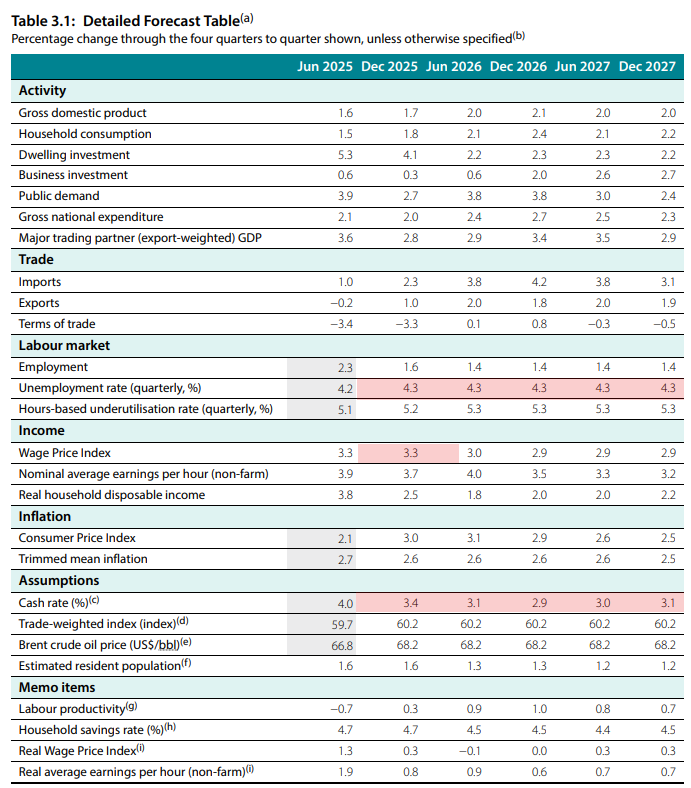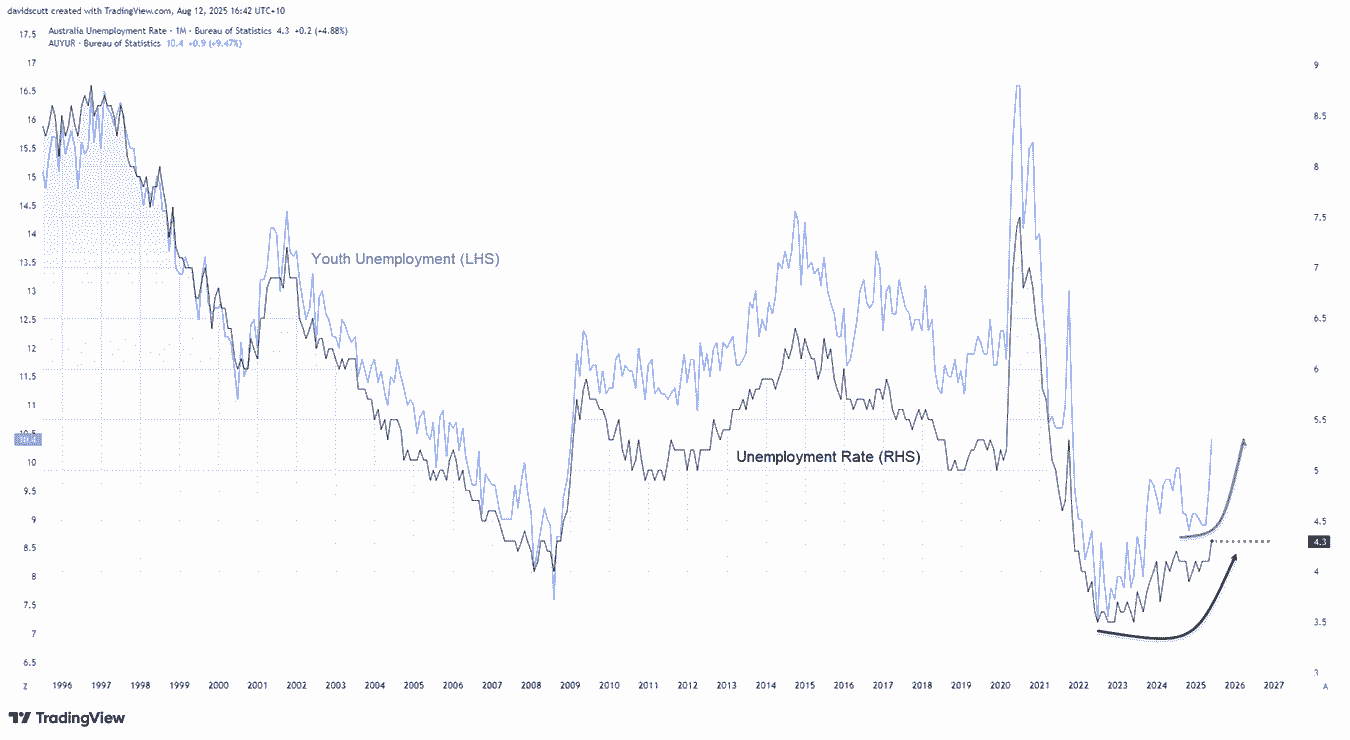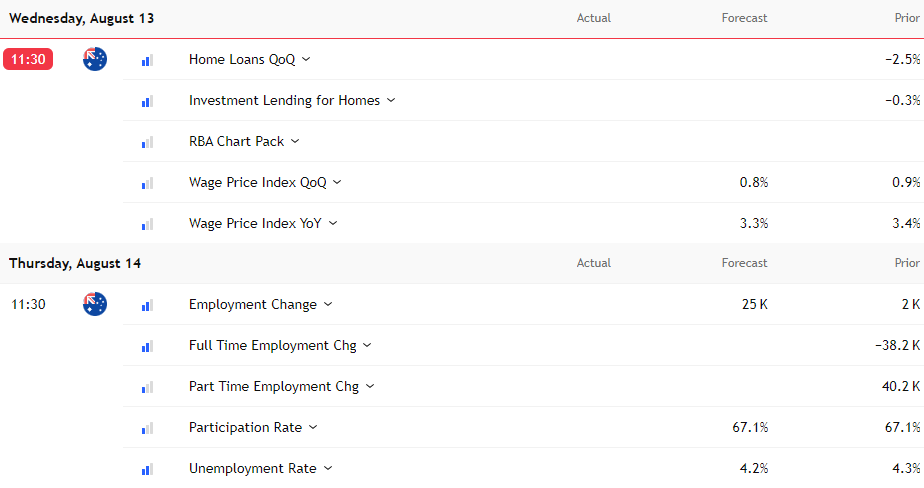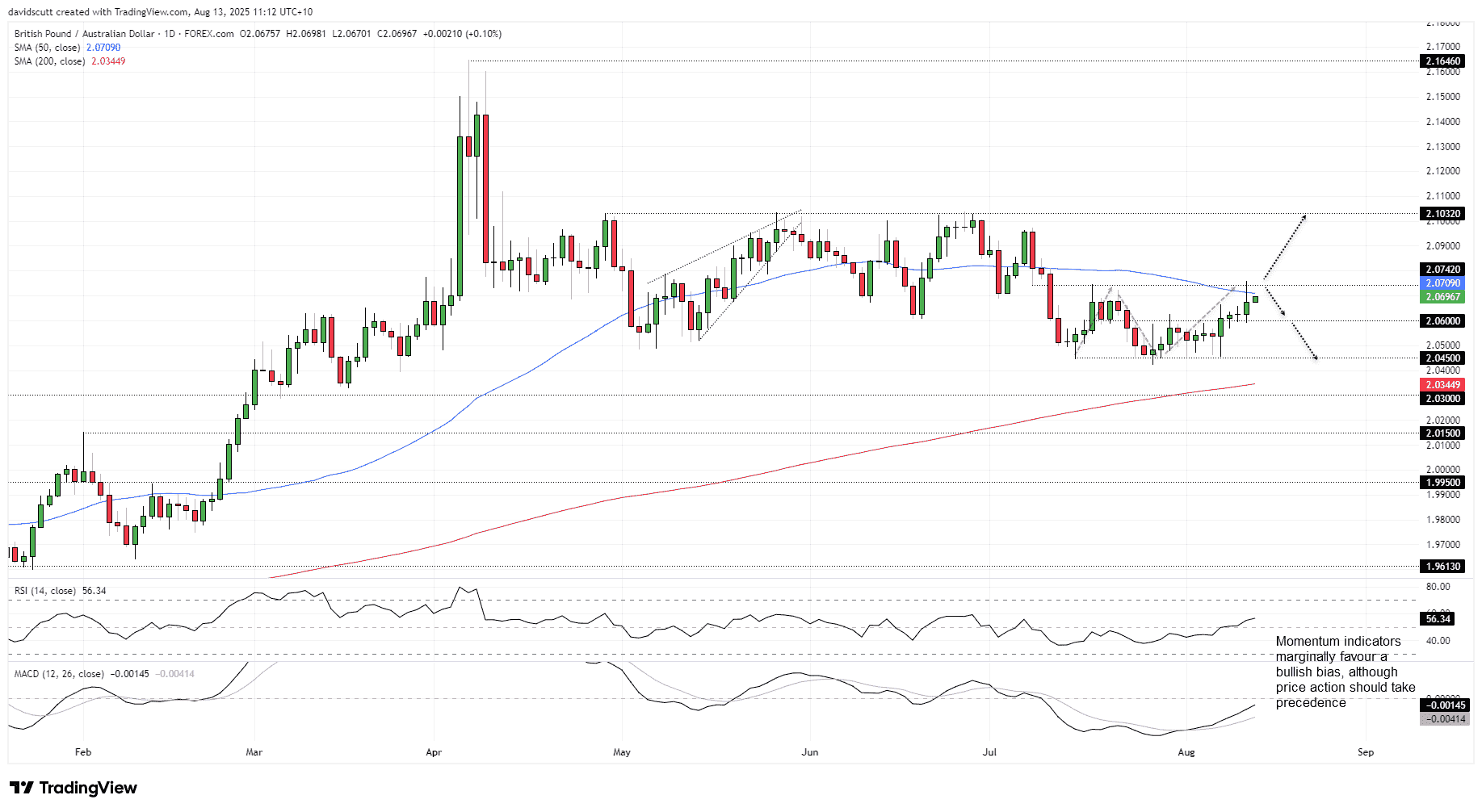Fed to begin policy meeting; Paramount’s WBD bid - what’s moving markets
The Aussie dollar faces two major tests with wages and jobs data due this week, threatening to bring forward RBA rate cuts if labour market weakness persists. EUR/AUD trades in a bull flag, while GBP/AUD remains range-bound, giving traders clearly defined technical setups.
- RBA sees unemployment peak at 4.3%.
- Weak jobs data could accelerate rate cut timeline and hit AUD.
- EUR/AUD holding bullish flag, 1.8100 and 1.8400 upside targets.
- GBP/AUD range 2.0450–2.0742 intact, breakout or fade both in play.
AUD Outlook Summary
The Australian dollar enters a key 24-hour window with wages and unemployment data likely to shape RBA rate cut expectations. Weakness in the labour market could accelerate policy easing and pressure the AUD, especially given the RBA’s assumption that unemployment has already peaked.
EUR/AUD remains in a bull flag pattern with buyers defending the 50-day moving average, while GBP/AUD continues to trade within a defined range, offering both breakout and fade opportunities depending on price action. GDP data from the UK and euro area also looms later in the week.
Key Australian Labour Market Data Looms
Australian dollar FX crosses may not be the most exciting pairs to trade, but they often trade beautifully for those who like to eliminate US dollar volatility from the equation.
With the main known risk event of the week out of the way in U.S. CPI, the Australian dollar squares up as an interesting prospect with key wages and unemployment data arriving over the next two days, especially with the latest forecasts from the Reserve Bank of Australia (RBA) premised on the view unemployment, at 4.3%, has already peaked.

Source: RBA
With that view underpinned by an assumption that Australia’s cash rate will be cut another three times this cycle, leaving it below 3%, any unexpected weakness in the labour market could bring forward the pace of rate cuts and weigh on the AUD. Given the trends in both headline unemployment and youth unemployment, which tends to be more responsive to shifts in the economic cycle, that looks a distinct risk, leaving the bar for further rate cuts particularly low.
Source: TradingView
The calendar below shows market expectations for both the wages and jobs reports. The RBA’s forecast for the wage price index looks for an annual increase of 3.3%, an outcome that will be realised if the quarterly rate prints at 0.8% without revisions to prior data.
Given this release rarely delivers major surprises, the main event for traders will likely be the jobs data released on Thursday.
While the sharp lift in the unemployment rate in June was partially caused by the way the survey is constructed, likely explaining why economists see it easing to 4.2% in July, one thing that has been consistent recently has been a slowdown in employment growth. If that persists and participation remains relatively steady, it risks seeing unemployment continuing to drift higher.

Source: TradingView
When it comes to relative importance to the RBA and the interest rate outlook, the unemployment rate is far more important than employment change, so keep that in mind if trading around the data.
EUR/AUD: Bull Flag Breakout Watch

Source: TradingView
EUR/AUD is a pair worth watching, sitting in a clear bullish flag pattern that hints at an eventual resumption of the prior upward trend. The pair has already made multiple attempts to stage a bullish breakout, including following the RBA rate decision on Tuesday, but none have been successful yet.
For now, buyers are lurking at the 50-day moving average, providing a potential entry level for those considering longs. 1.7800 has also seen some work recently, so take note of the price action should the pair trade through the 50-day moving average over the coming days. If the price were to push meaningfully below the latter, it would increase the risk of a retest of flag support.
If an eventual bullish break takes place, the July 7 high of 1.8100 will likely be targeted by bulls. A break of that level may lead to an extension of the move back towards 1.8400, where the pair struggled around the time of the Liberation Day tariff announcement in April.
Both RSI (14) and MACD are providing mildly bullish signals on price momentum, favouring playing the pair from the long side rather than short side near-term.
GBP/AUD Tests Range Top
Source: TradingView
GBP/AUD has been sitting in a clearly defined range between 2.0450 on the downside and 2.0742 on the topside over the past month, pushing toward the top of the range in recent times following the Bank of England’s hawkish cut last week. For now, sellers have successfully defended the level, creating an opportunity for both bullish and bearish setups depending on how the near-term price action evolves.
If the pair can break and close above 2.0742, it may encourage additional longs to be set seeking a retest of major resistance at 2.1032. A stop beneath 2.0742 would protect against reversal. But if the price fails again to close above 2.0742, the setup could be flipped with shorts established beneath the level with a stop above for protection. Possible targets include 2.0600 or 2.0450, depending on desired risk-reward from the trade.
Momentum indicators marginally favour upside over downside, although the overall signal could best be described as neutral. As such, price action should take precedence over holding a particular directional bias.
When considering Aussie crosses against the European majors, be aware that preliminary Q2 GDP figures from both the U.K. and euro area will be released on Thursday. Quarterly growth rates of 0.1% for both are expected.
